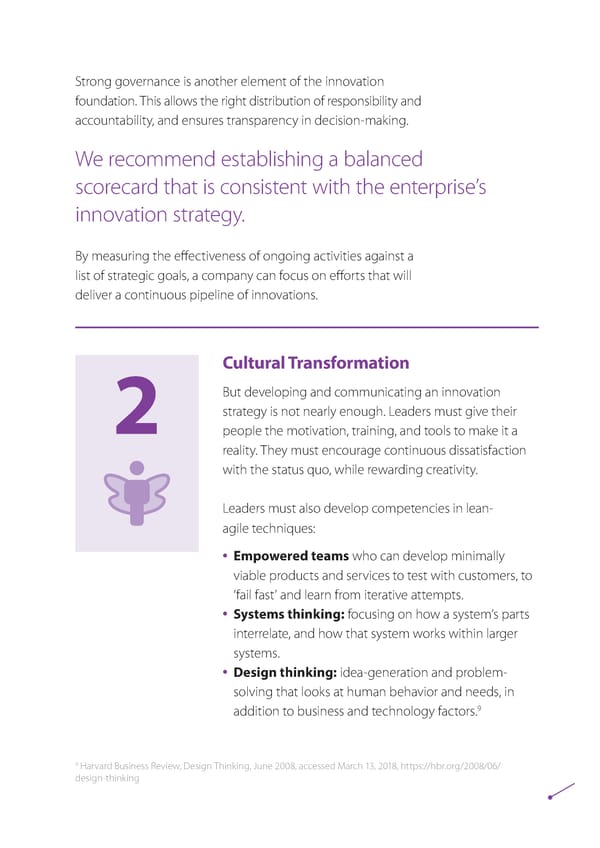Strong governance is another element of the innovation foundation. This allows the right distribution of responsibility and accountability, and ensures transparency in decision-making. We recommend establishing a balanced scorecard that is consistent with the enterprise’s innovation strategy. By measuring the effectiveness of ongoing activities against a list of strategic goals, a company can focus on efforts that will deliver a continuous pipeline of innovations. Cultural Transformation But developing and communicating an innovation 2 strategy is not nearly enough. Leaders must give their people the motivation, training, and tools to make it a reality. They must encourage continuous dissatisfaction with the status quo, while rewarding creativity. Leaders must also develop competencies in lean- agile techniques: € Empowered teams who can develop minimally viable products and services to test with customers, to ‘fail fast’ and learn from iterative attempts. € Systems thinking: focusing on how a system’s parts interrelate, and how that system works within larger systems. € Design thinking: ide a-generation and problem- solving that looks at human behavior and needs, in 9 addition to business and technology factors. 9 Harvard Business Review, Design Thinking, June 2008, accessed March 13, 2018, https://hbr.org/2008/06/ design-thinking
 Enterprise Agility: Pushing Innovation to the Edge of the Organization Page 3 Page 5
Enterprise Agility: Pushing Innovation to the Edge of the Organization Page 3 Page 5